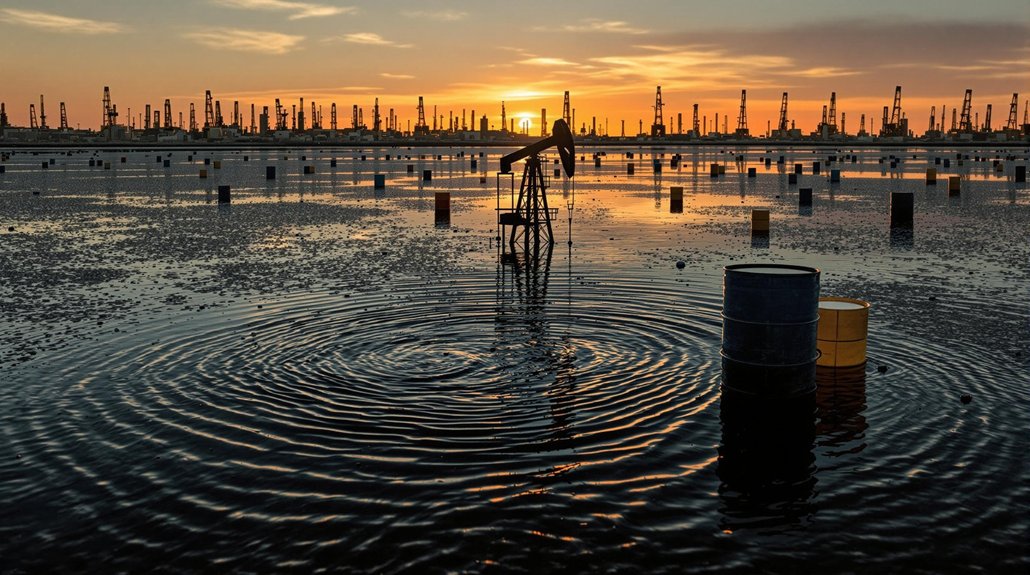The U.S. oil industry faces a paradox: record production at 13 million barrels daily while prices drop 15%. Trump demands more drilling, but companies aren’t biting. Why? Market saturation. Only 20% of Gulf leases are producing, with 12 million acres sitting idle. Supply chains remain a mess. Meanwhile, OPEC+ carefully manages global output to prevent price collapse. Companies aren’t stupid—they won’t drill themselves into bankruptcy. The numbers tell the real story.
Despite record production levels in the United States, the oil industry faces significant supply chain headaches worldwide. With U.S. output already at a staggering 13 million barrels per day, the Trump administration is pushing for more—more drilling, more permits, more leases. This comes as global oil supply hit 103.4 million barrels per day in November 2024. That’s a lot of oil, folks.
The market’s response? Oil prices have tanked 15% since Trump took office in January. WTI crude now hovers around $68 per barrel. The administration isn’t exactly crying about it. Lower gas prices mean happier voters and cooling inflation. Mission accomplished?
But here’s the kicker: companies aren’t exactly rushing to drill more. Of 2,206 active leases in the Gulf of Mexico, a measly 20% are actually producing oil. Nearly 12 million acres sitting idle. Why? Because the market is saturated. Plain and simple.
Supply chains aren’t helping either. They’re a mess—complex, expensive, and still reeling from pandemic disruptions. Industry leaders have identified supply-chain uncertainty as their most pressing issue, with production efficiency declining while operating costs continue to rise. These problems won’t disappear overnight, no matter how many executive orders get signed.
Meanwhile, OPEC+ has been playing its own game, cutting output by nearly 6 million barrels daily since late 2022. They’re planning to gradually restore 2.2 million barrels throughout 2025. Their delay in unwinding cuts helps prevent a total price collapse. How thoughtful of them. If these cuts are unwound earlier than planned, it could increase the supply overhang to 1.4mb/d by early 2025.
The global picture is equally complicated. Demand growth is accelerating, expected to hit 1.1 million barrels per day in 2025. Non-OPEC+ supply is projected to rise by about 1.5 million barrels daily in both 2024 and 2025.
Long term, other factors loom large. Renewable energy adoption continues. Environmental regulations evolve. Electric vehicle growth has slowed to 13% year-over-year, but the shift marches on.








